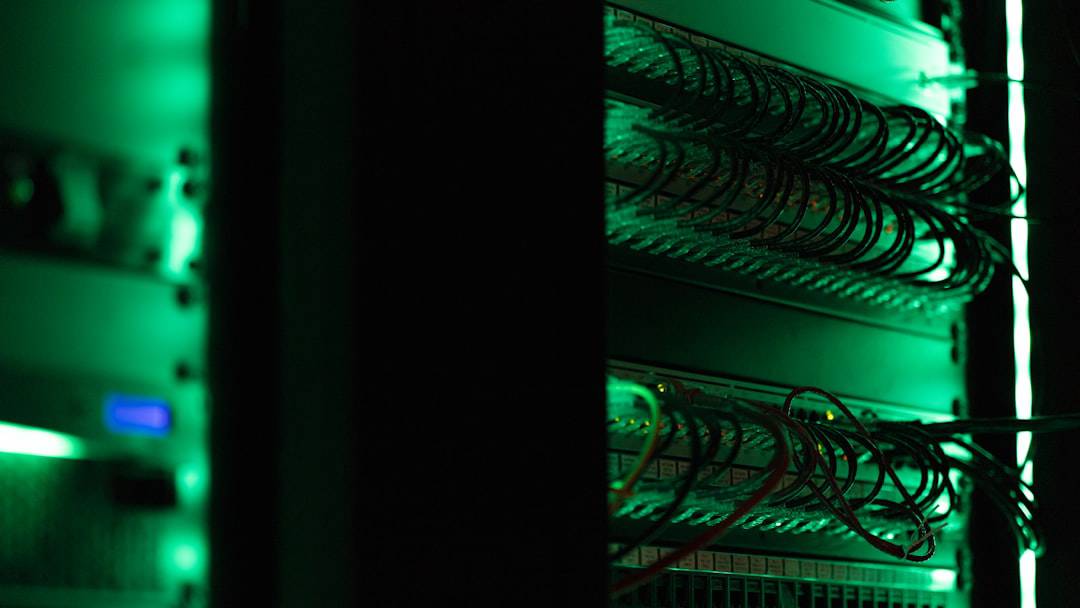A brute force attack is a cybersecurity threat where an attacker attempts to gain unauthorized access to a system by systematically trying all possible combinations of usernames and passwords. This method is commonly used to crack encrypted data, breach secure systems, or access sensitive information. Brute force attacks typically employ automated software capable of rapidly generating and testing thousands or millions of combinations in a short period, making them a favored technique among hackers targeting weak or easily guessable passwords.
While brute force attacks can be time-consuming and resource-intensive, they can prove highly effective if the attacker persists. Some attackers utilize distributed brute force attacks, leveraging multiple computers or devices to simultaneously test different combinations, thereby increasing the attack’s speed and efficiency. Consequently, brute force attacks pose a significant threat to the security of any system or network that relies on password-based authentication.
Key Takeaways
- A brute force attack is a type of cyber attack where an attacker tries to gain unauthorized access to a system by trying every possible password or encryption key.
- Brute force attacks work by systematically trying every possible combination of characters until the correct one is found, often using automated tools to speed up the process.
- Common targets of brute force attacks include login pages, encryption keys, and password-protected files or databases.
- Signs of a brute force attack include multiple failed login attempts, unusual account activity, and unexpected system errors or crashes.
- Preventing brute force attacks involves using strong, unique passwords, implementing account lockout policies, and using multi-factor authentication to add an extra layer of security.
How Does a Brute Force Attack Work?
In a brute force attack, the attacker uses automated software to systematically try every possible combination of characters in order to guess the correct password. This can include trying all possible combinations of letters, numbers, and special characters, depending on the complexity of the password being targeted. The software will continue to generate and test combinations until the correct password is found, or until the attacker decides to give up.
One common method of carrying out a brute force attack is through the use of a dictionary file, which contains a list of commonly used passwords and words that are likely to be used as passwords. The attacker’s software will systematically try each word in the dictionary file as a password, along with various combinations of numbers and special characters. This method can be particularly effective against weak or easily guessable passwords, as it significantly reduces the number of possible combinations that need to be tested.
Another method of carrying out a brute force attack is through the use of rainbow tables, which are precomputed tables used for reversing cryptographic hash functions to obtain the original input. This allows attackers to quickly compare hashed passwords against entries in the rainbow table to find a match, significantly speeding up the process of cracking passwords.
Common Targets of Brute Force Attacks

Brute force attacks can target a wide range of systems and networks that rely on passwords for authentication. Some common targets of brute force attacks include: 1. Online accounts: Attackers may target online accounts such as email, social media, and banking accounts in order to gain unauthorized access to sensitive information or carry out fraudulent activities.
2. Network devices: Brute force attacks can be used to gain access to network devices such as routers, switches, and firewalls, allowing attackers to intercept or manipulate network traffic. 3.
Web applications: Attackers may target web applications in order to gain access to sensitive data or compromise the security of the application itself. 4. Encryption: Brute force attacks can be used to crack encrypted data, such as encrypted files or communications, in order to gain access to sensitive information.
5. Remote access: Attackers may use brute force attacks to gain unauthorized access to remote systems or services, such as remote desktop or SSH connections. Overall, any system or network that relies on passwords for authentication is potentially vulnerable to brute force attacks, making it important for organizations and individuals to take steps to protect themselves against this type of threat.
Signs of a Brute Force Attack
| Signs of a Brute Force Attack |
|---|
| 1. Multiple failed login attempts |
| 2. Unusual account lockouts |
| 3. Sudden increase in traffic |
| 4. Unrecognized IP addresses in logs |
| 5. Unusual patterns in login attempts |
There are several signs that may indicate that a brute force attack is taking place. Some common signs include: 1. Multiple failed login attempts: If there are multiple failed login attempts from the same IP address or user account within a short period of time, it may indicate that an attacker is trying to guess the correct password through a brute force attack.
2. Unusual account activity: If there is unusual activity on an account, such as changes to account settings or unauthorized access to sensitive information, it may indicate that an attacker has gained unauthorized access through a brute force attack. 3.
Slow system performance: A brute force attack can put a significant strain on system resources, leading to slow performance or unresponsiveness. 4. Unexplained network traffic: An increase in network traffic, particularly from unfamiliar or suspicious IP addresses, may indicate that a brute force attack is taking place.
5. Account lockouts: If user accounts are repeatedly being locked out due to too many failed login attempts, it may indicate that an attacker is trying to gain unauthorized access through a brute force attack. It’s important for organizations and individuals to monitor for these signs and take appropriate action if they suspect that a brute force attack is taking place.
Preventing Brute Force Attacks
There are several steps that organizations and individuals can take to prevent brute force attacks: 1. Use strong passwords: Using complex and unique passwords for each account can make it more difficult for attackers to guess the correct password through a brute force attack. 2. Implement account lockout policies: Implementing account lockout policies that temporarily lock user accounts after a certain number of failed login attempts can help prevent attackers from gaining unauthorized access through brute force attacks. 3. Use multi-factor authentication: Implementing multi-factor authentication can add an extra layer of security by requiring users to provide additional verification, such as a one-time code sent to their mobile device, in addition to their password. 4. Monitor for unusual activity: Regularly monitoring for unusual account activity and network traffic can help organizations and individuals detect and respond to brute force attacks in a timely manner. 5. Limit login attempts: Implementing rate limiting on login attempts can help prevent attackers from rapidly trying different combinations of usernames and passwords. By taking these preventive measures, organizations and individuals can significantly reduce their risk of falling victim to a brute force attack.
Responding to a Brute Force Attack

If an organization or individual suspects that they are being targeted by a brute force attack, there are several steps they can take to respond effectively: 1. Monitor for signs of attack: Regularly monitoring for signs of a brute force attack, such as multiple failed login attempts or unusual account activity, can help organizations and individuals detect and respond to the attack in a timely manner. 2. Temporarily block IP addresses: Temporarily blocking IP addresses that are making repeated failed login attempts can help mitigate the impact of a brute force attack by preventing further attempts from that source. 3. Change passwords: If an account has been compromised as a result of a brute force attack, it’s important to change the password immediately to prevent further unauthorized access. 4. Report the attack: Reporting the attack to relevant authorities or security teams can help raise awareness of the threat and potentially prevent other organizations or individuals from falling victim to the same attack. 5. Implement additional security measures: In response to a brute force attack, organizations and individuals may consider implementing additional security measures, such as multi-factor authentication or stronger password policies, to prevent future attacks. By responding proactively and effectively to a brute force attack, organizations and individuals can minimize the impact of the attack and reduce their risk of falling victim to similar attacks in the future.
The Future of Brute Force Attacks and Cybersecurity
As technology continues to advance, so too do the capabilities of attackers who seek to exploit vulnerabilities in systems and networks. The future of brute force attacks and cybersecurity will likely be shaped by ongoing developments in technology and security practices. One potential trend in the future of brute force attacks is the use of artificial intelligence (AI) and machine learning (ML) techniques by attackers to automate and optimize their attack strategies.
AI and ML can be used to analyze patterns in user behavior and password usage, allowing attackers to more effectively target weak or easily guessable passwords. In response, cybersecurity professionals will need to develop advanced AI and ML-based defense mechanisms to detect and respond to these sophisticated attacks. Another potential trend is the increasing use of biometric authentication methods, such as fingerprint or facial recognition, as an alternative to traditional password-based authentication.
While biometric authentication methods can provide an additional layer of security, they are not immune to attacks, and cybersecurity professionals will need to continue developing robust defenses against potential biometric-based brute force attacks. Overall, the future of brute force attacks and cybersecurity will likely be characterized by an ongoing arms race between attackers seeking to exploit vulnerabilities and cybersecurity professionals working to develop advanced defense mechanisms. By staying informed about emerging threats and best practices in cybersecurity, organizations and individuals can better prepare themselves for the evolving landscape of cyber threats.
If you want to learn more about the potential impact of artificial intelligence on cybersecurity, check out this article on artificial intelligence. It discusses how AI can be used to detect and prevent cyber attacks, including brute force attacks, by analyzing patterns and identifying anomalies in network traffic. This technology could play a crucial role in protecting the metaverse and the real world from malicious actors.
FAQs
What is a brute force attack?
A brute force attack is a method used by hackers to gain unauthorized access to a system or account by trying every possible password or encryption key until the correct one is found.
How does a brute force attack work?
In a brute force attack, a hacker uses automated software to systematically try every possible combination of characters until the correct password or encryption key is discovered.
What are the targets of brute force attacks?
Brute force attacks can target any system or account that requires a password or encryption key for access, including websites, email accounts, and network servers.
What are the potential consequences of a successful brute force attack?
If a brute force attack is successful, the hacker can gain unauthorized access to sensitive information, compromise the security of the system, and potentially cause financial or reputational damage to the targeted organization.
How can organizations protect against brute force attacks?
Organizations can protect against brute force attacks by implementing strong password policies, using multi-factor authentication, and implementing account lockout mechanisms that prevent multiple login attempts after a certain number of failed tries.











Leave a Reply